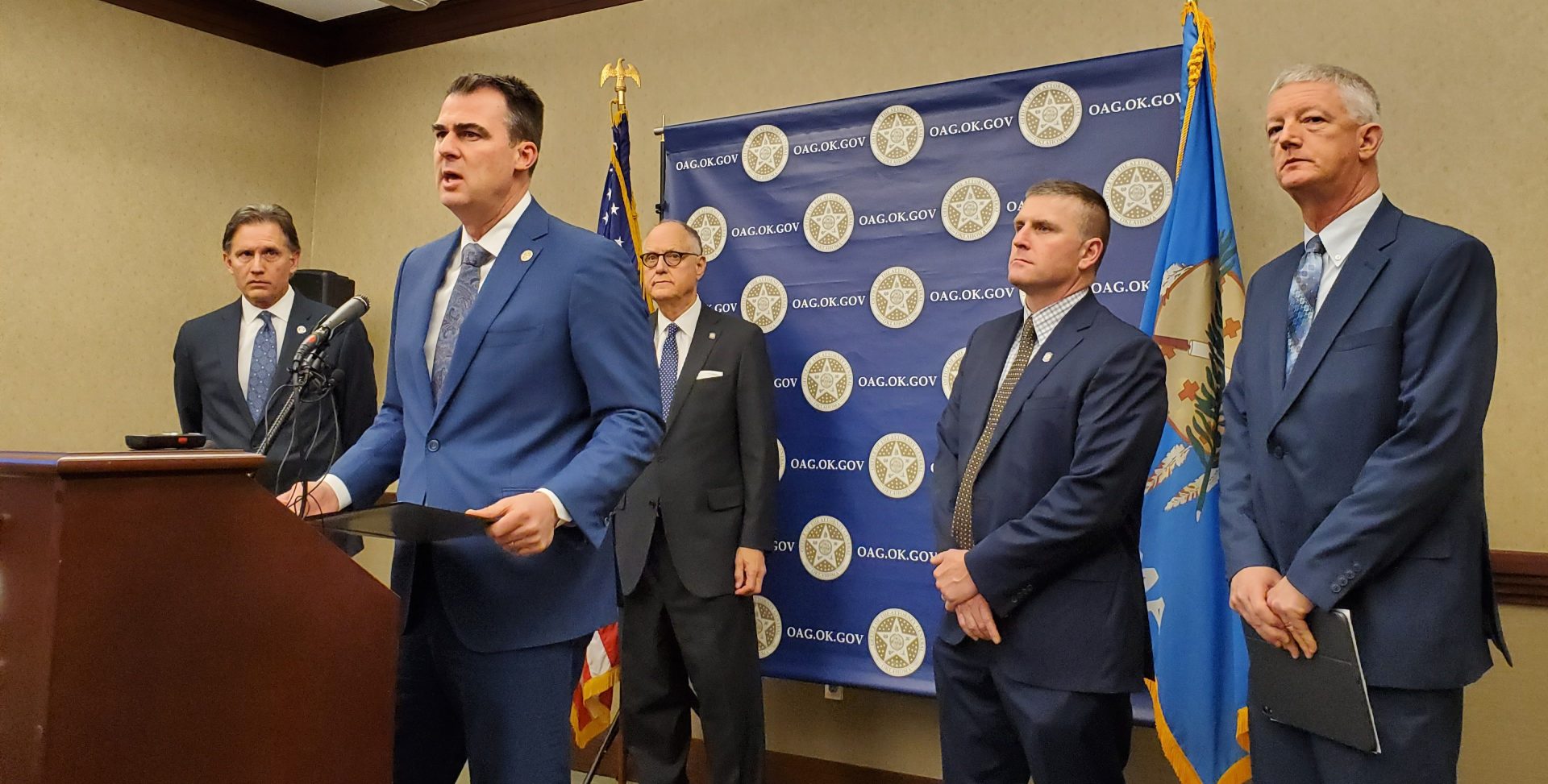
Gov. Kevin Stitt, Attorney General Mike Hunter and Department of Corrections Director Scott Crow say new rules will prevent mistakes during future executions.
Quinton Chandler / StateImpact Oklahoma


Gov. Kevin Stitt, Attorney General Mike Hunter and Department of Corrections Director Scott Crow say new rules will prevent mistakes during future executions.
Quinton Chandler / StateImpact Oklahoma
The last executions in Oklahoma were embarrassing failures.
Before he died, Clayton Lockett writhed and moaned on his gurney. Charles Warner said his body was “on fire.” Richard Glossip’s execution had to be called off at the last minute.
The state weathered national scorn over Lockett’s death. It faced even more criticism after it was discovered Richard Glossip nearly received the wrong drug combination, and the wrong combination was given to Charles Warner.
Facing a public relations nightmare, a dearth of lethal injection drugs and a lawsuit filed by death row prisoners, former Oklahoma Attorney General Scott Pruitt agreed to postpone executions indefinitely in 2015.
For about five years, state officials couldn’t find a supplier for the right drugs. Now, current Attorney General Mike Hunter says the state has found their new supply, and they’re ready to resume executions.
On Thursday, Gov. Kevin Stitt, Attorney General Mike Hunter and Department of Corrections Director Scott Crow said the state won’t be repeating its past execution blunders.
Hunter says state employees have a new set of rules to follow during executions.
“Any issues with these drugs have always been connected with human error,” Hunter said.
Hunter’s statement is controversial. One of the drugs used in Oklahoma executions is Midazolam. People around the country are questioning whether using the drug causes prisoners in death chambers to feel intense pain, even drowning sensations.
The state’s reassurances over the new rules aren’t convincing attorney Dale Baich who has multiple clients on Oklahoma’s death row.
Baich says there’s a culture of carelessness surrounding executions in Oklahoma.
“In the next few days, we will advise the federal court and continue with the ongoing litigation challenging the constitutionality of Oklahoma’s protocol,” Baich said in a written statement.
In 2018, Hunter and former corrections chief Joe Allbaugh said they couldn’t find the drugs they needed for lethal injections. So, they began creating a new plan to use nitrogen gas to execute prisoners.
For nearly two years, the attorney general’s office and the Department of Corrections said they were working on new rules for delivering the gas. It’s unclear how much progress they made. The state kept details on the new method largely secret.
Now, Hunter says because they’ve found a new drug supply there’s no need to focus on nitrogen. Still, he says the state will continue developing a nitrogen gas protocol as a fall back, just in case lethal injections can’t be carried out in the future.
“The 2015 law allowing the state to develop a method for nitrogen hypoxia specifically states that death sentences shall be carried out by nitrogen hypoxia only if the drugs for lethal injection are unavailable,” Hunter said.
Hunter and current Department of Corrections Director Scott Crow wouldn’t identify the state’s new drug source. They also wouldn’t say how many executions they can carry out with their new supply.
It’s unclear when the first executions will be scheduled.
The 2015 court agreement to postpone executions stipulates that the state must first give the new execution protocols to the prisoners on death row who sued the state. One hundred and fifty days after that the state can ask to schedule an execution.
There are 47 death row inmates in Oklahoma. Twenty-six have exhausted their appeals.